PV Installation of 100 kW
The facility consists of 23 strings of 20 PV modules type LW245 of 245 watts each, for a total of 460 PV modules
Modules are fixed to the roof with galvanized structures of 25º tilt and an azimut
1 Inverter of 100 kWn
PV installation saves 158.000 kWh/year to EXKAL, equivalent to the energy consumed by 72 households and CO2, that represents savings of 102.7 Tn/year
Case study 3
The target is to demonstrate the added value of energy storage systems to increase and improve the integration and use of local renewable resources in self-consumption industrial plants.
For this purpose, a Lithium-ion battery is installed in addition to the existing PV Plant in EXKAL’s facility, to reduce its demand charge and the energy consumption from the grid, generating power and energy savings.
Demonstration of storage in the factory
The target is to demonstrate the added value of energy storage systems to increase and improve the integration and use of local renewable resources in self-consumption industrial plants.
Navarra, Spain
Exkal demonstration in STORY is based on a storage system with Ion- Lithium battery, adapting an existing Photovoltaic Facility of 112,70 kWp installed on the roof of the factory for instant self-consumption, into a storage facility, focus on several targets:
- Reduce peak power of the energy bill for industrial sector combining storage/batteries with PV generation.
- Reduce energy factor in the electricity bill by optimizing the use of the local PV energy based on the electricity tariff periods.
For the dimensioning of the storage system, we take as starting point for this demonstration:
- A Power demand of around 280 kW per tariff period
- Storage of 50 kW, 200 kWh with Ion- Lithium battery
Responsible partner: Exkal
“It’s a great opportunity to show that the storage of energy is a reality that has already arrived, and will change our future.”
Clemente López Gilardi, Exkal
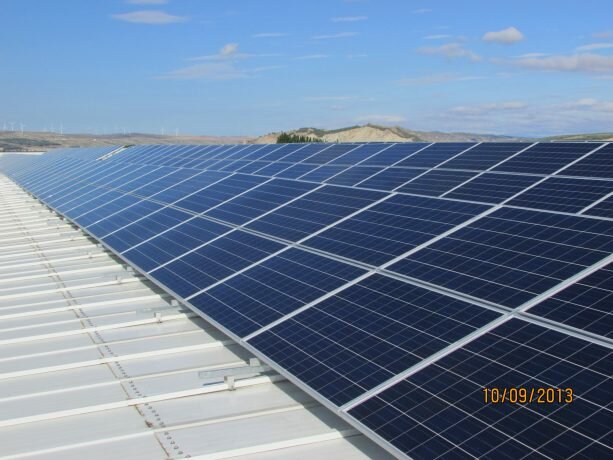
PV Facility placed on the roof of the warehouse of EXKAL in Marcilla, Navarra
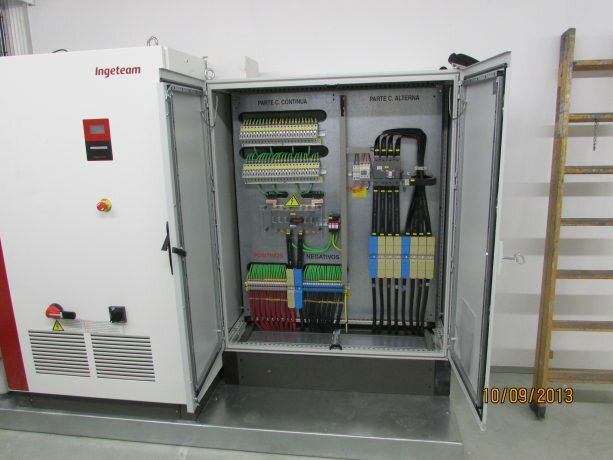
Photovoltaic Inverter (DC to AC)
The inverter is a model Ingecon Sun 100, manufactured by Ingeteam, of 100 kWn of power. This is the device that transforms direct energy into alternative current energy (DC to AC), thus making it possible to return energy to the general grid or to our internal grid, as it is in the case of self-consumption.
On the right hand of the picture, there is an electric board with all protections and control of the components, with DC components on the left hand and AC protections on the right hand.
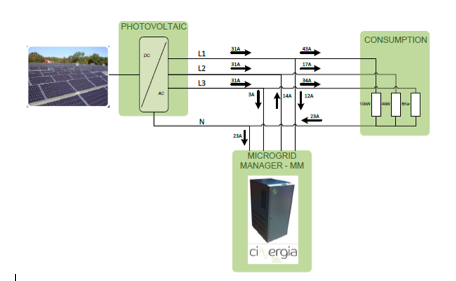
In principle, the charge of the batteries would be made with the energy generated by the PV facility, but the power electronic Equipment, MM60 of 60 kVA / 54kW, will have the flexibility to make the charge of the batteries from the Electrical Grid, in the future.
In this particular project, the decision of charging or consuming energy of the batteries will be taken by an external control system designed based on parameters as DOD, cost of energy, consumption… The MM controls the flow of energy to have these data always monitored within the limits fit by the battery manufacturer not to be exceeded.
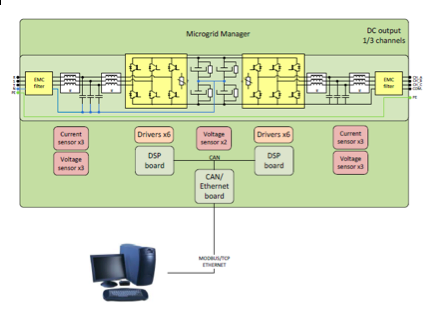
By controlling the active and reactive power Microgrid Manager MM60 may have the following functions:
Storage of surpluses of renewable energy
Reduction peaks power (peak shaving)
Reducing energy consumption of the grid at peak hours
Compensation of reactive power (power factor)
Balanced consumption phase

Operation and supervision of the equipment is done remotely from MODBUS / TCP over Ethernet. Also it has an LCD display on the front that allows a basic monitoring of the equipment status.
The equipment can be operated and monitored remotely via an Ethernet bus communications. A PC-embedded internally, allows the exchange of information between the internal CAN bus and the external Modbus TCP / IP (Ethernet). Thus, the Microgrid Manager acts as a server Modbus TCP /IP.
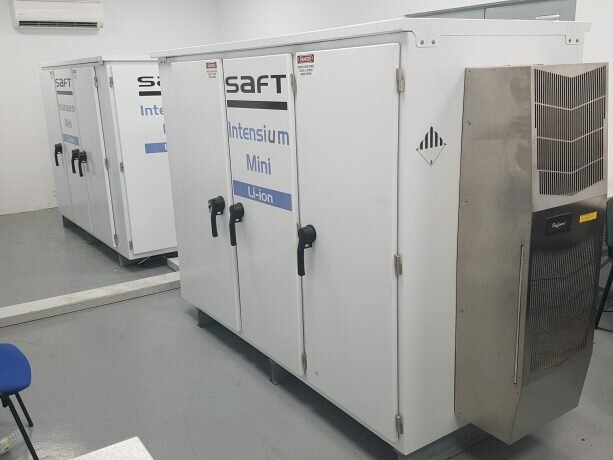
Lithium-ion battery
Two Saft Intensium Mini E Li-ion battery, with a capacity of 50 kW power and 200 kWh energy manufactured by SAFT, are connected to the local grid throw a power converter manufactured by CINERGIA.
Li-ion battery is charged by the energy generated by the PV facility. However, the power electronic equipment, an MM60 Microgrid Manager rated at 60 kVA / 54 kW, offers the flexibility for the batteries to also be charged from the electrical grid.
By controlling the active and reactive power, the MM60 Microgrid Manager enables EXKAL’s ESS to offer the following functions:
Storage of surplus solar energy
Reduction in peak power loads (peak shaving)
Reducing energy consumption from the grid at peak hours
Balanced consumption
Originally, the ESS was targeted at a peak shaving approach according to a pre-calculated threshold in order to reduce EXKAL’s demand charge.
Subsequently, the consumption of the factory was decreased due to restructuring and the strategy was refocused on reducing the energy demanded from the grid.
In September 2018, a new strategy is charged, based on a new input, the charge of the batteries from the grid during the cheapest periods of energy during the day and using this energy during the most expensive periods.









